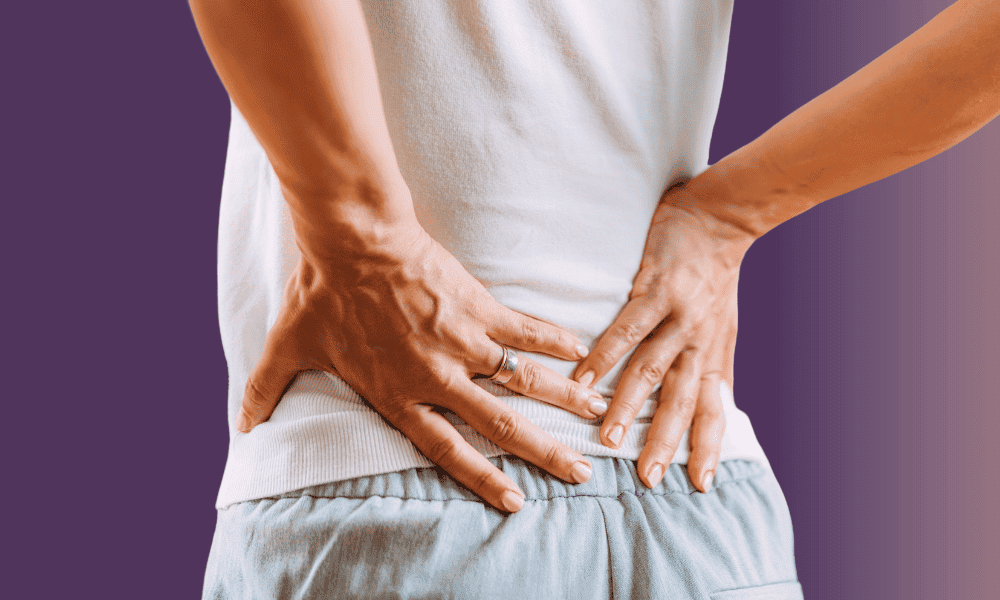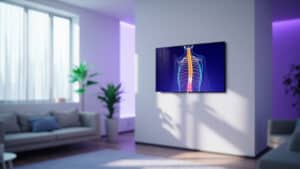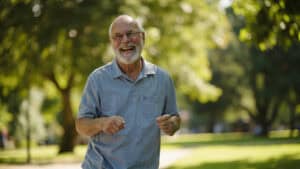L5-S1 Pain and Its Causes, Symptoms, and Treatment
Written by Dr. Matthias Wiederholz, MD | Last Updated: July 2025
Quick Insights
L5-S1 nerve root compression symptoms are defined by sharp, radiating pain in the lower back or leg, sometimes called radiculopathy, backed by recent clinical studies as a primary sign of nerve involvement.
Key Takeaways
- Muscle weakness, numbness, and tingling often accompany L5-S1 nerve root compression beyond pain symptoms.
- Spinal stenosis and herniated discs frequently cause nerve root compression at the L5-S1 level.
- Symptoms can worsen with sitting, bending, or sudden movements, impacting daily activities significantly.
- Early diagnosis and varied treatment options, including minimally invasive procedures, improve outcomes and reduce long-term disability risk.
Why It Matters
Understanding L5-S1 nerve root compression symptoms helps prevent daily struggles with pain, loss of mobility, and emotional stress. Early awareness empowers you to seek tailored treatments, preserving independence and improving well-being when pain threatens your quality of life.
As a board-certified interventional pain physician in Physical Medicine & Rehabilitation and Pain Medicine with over 20 years of experience, I’ve seen how L5-S1 nerve root compression symptoms can disrupt lives in Houston and beyond. Read more about L5-S1 pain causes, symptoms, and treatment.
This condition occurs when the nerve root between the lowest lumbar vertebra (L5) and the first sacral vertebra (S1) becomes compressed—often due to spinal stenosis or disc herniation—causing sharp, radiating pain, muscle weakness, or numbness. As the first physician in Houston to offer the Discseel® Procedure and a nationally recognized leader in non-surgical spine care, my focus has always been on pioneering innovative, minimally invasive treatments that restore function and quality of life.
Symptoms like intense lower back or leg pain, sometimes called radiculopathy, are hallmark signs of nerve involvement. Clinical research confirms that nerve root compression caused by spinal stenosis or disc herniation produces sharp, radiating pain along the nerve pathway.
If you’re struggling to manage daily activities due to these symptoms, this guide offers evidence-based strategies to relieve pain and regain control.
Used source: https://pmc.ncbi.nlm.nih.gov/articles/PMC11352478/
Understanding the L5-S1 Segment and Nerve Root Compression
The L5-S1 segment sits at the base of your spine, where the lumbar spine meets the sacrum. This area is crucial for movement and stability, but it’s also highly vulnerable to injury and degeneration. In my 20 years of treating spine conditions in Houston, I’ve seen how the unique anatomy here—where the L5 nerve root exits the spinal canal—makes it a common site for nerve compression.
L5-S1 nerve root compression symptoms often include sharp, radiating pain, numbness, tingling, and muscle weakness. These symptoms, known as radiculopathy, occur when the nerve root is pinched by a herniated disc, spinal stenosis (narrowing of the spinal canal), or degenerative changes. Sciatica is a lay term for this radiating leg pain, but true radiculopathy involves both pain and neurological symptoms.
What are the hallmark symptoms of L5-S1 nerve root compression?
L5-S1 nerve root compression typically causes sharp, radiating lower back and leg pain, numbness, tingling, and muscle weakness. Symptoms may worsen with movement and can significantly impact daily life.
Common L5-S1 Nerve Root Compression Symptoms:
- Sharp, shooting pain in the lower back or buttock
- Radiating pain down the leg (sciatica)
- Numbness or tingling in the foot or toes
- Muscle weakness, especially when lifting the foot
Houston’s active workforce and high rates of manual labor contribute to a greater prevalence of these injuries locally. My training in both sports medicine and regenerative medicine has shown that early recognition and intervention are key to preventing long-term disability. Learn more about S1 nerve root distribution, anatomy, symptoms, and treatment. As someone who trains other physicians in these techniques, I emphasize the importance of understanding the anatomy and function of the L5-S1 segment for accurate diagnosis and treatment.
Explore back pain treatment options in Houston if you or a loved one is experiencing persistent symptoms at this spinal level.
Causes of L5-S1 Nerve Root Compression
Several conditions can lead to nerve compression at the L5-S1 level. In my practice, I most often see the following causes:
- Herniated Discs: The soft center of the disc pushes through its tough outer layer, pressing on the nerve root and causing inflammation.
- Degenerative Disc Disease: Age-related wear and tear weakens the disc, leading to instability and nerve compression.
- Spinal Stenosis: The spinal canal narrows, often from arthritis or bone spurs, squeezing the nerve root.
Houston’s labor-intensive industries, such as construction and energy, increase the risk of these conditions due to repetitive lifting and bending. Each of these causes can trigger the classic symptoms of L5-S1 nerve root compression, and understanding the underlying issue is essential for effective L5-S1 treatment in Houston.
For an in-depth overview, read more about degenerative disc disease treatment options and how they may impact the lumbar spine.
Identifying Symptoms and Diagnosis of L5-S1 Nerve Root Compression
L5-S1 nerve root compression symptoms usually begin with sharp, radiating pain in the lower back or leg. This pain may be accompanied by numbness, tingling, or muscle weakness. In my experience, the specific symptoms often point to the underlying cause—herniated discs tend to cause sudden, severe pain, while degenerative disc disease produces more gradual discomfort.
Primary Symptoms of L5-S1 Nerve Root Compression:
- Sharp or burning lower back pain
- Radiating pain down the leg (sciatica)
- Numbness or tingling in the foot or outer leg
- Muscle weakness, especially in the foot or ankle
Symptoms often worsen with sitting, bending, or twisting. I commonly see patients whose pain intensifies after long periods of driving or desk work. Prompt evaluation by a physician is critical, as early diagnosis can prevent permanent nerve damage.
Diagnosis starts with a detailed history and physical exam. I assess muscle strength, reflexes, and sensation to pinpoint the affected nerve. Imaging—usually MRI or CT—confirms the diagnosis and helps guide treatment. Research confirms that radiculopathy from nerve root compression produces sharp, radiating pain and neurological deficits.
To further understand the relationship between disc injuries and nerve root compression, see our guide on causes, symptoms, and treatment options for spinal disc tears.
Lower Back Pain and Leg Symptoms (Sciatica)
Lower back pain from L5-S1 nerve root compression can be dull, sharp, or radiating. It often starts suddenly after lifting or twisting. Sciatica describes pain that travels from the lower back down the leg, sometimes reaching the foot. In my Houston clinic, I see this pattern frequently in patients with herniated discs or spinal stenosis.
- Lower back pain: dull ache, sharp stabbing, or burning
- Leg pain (sciatica): radiates down the back or side of the leg
- Numbness, tingling, or weakness in the foot
These symptoms help me link the pain to specific causes, such as those listed in the “Causes of L5-S1 pain” section above. Recognizing these patterns is essential for accurate diagnosis and effective treatment of L5-S1 nerve root compression symptoms in Houston.
Learn about herniated disc exercises to support recovery from these symptoms.
Diagnosis and When to Seek Medical Attention
Diagnosing L5-S1 nerve root compression involves a thorough physical exam and imaging tests. I check for muscle weakness, sensory changes, and abnormal reflexes. MRI or CT scans provide detailed images of the spine, revealing herniated discs, spinal stenosis, or other causes of nerve compression.
Accurate diagnosis allows me to distinguish between mild cases that respond to conservative care and severe cases that may require intervention. As a pain management doctor in Houston, I stress the importance of early evaluation to prevent complications.
Find more on emergency symptoms of a herniated disc and when to seek help.
When to Seek Medical Attention
Seek immediate care from a physician if you experience:
- Loss of bladder or bowel control
- Severe or rapidly worsening leg weakness
- Numbness in the groin or inner thighs
These symptoms may signal a medical emergency. For more information, see this authoritative guide on emergency symptoms of nerve compression.
Treatment Options for L5-S1 Nerve Root Compression and Advanced Solutions in Houston
When treating L5-S1 nerve root compression symptoms, I always start with the least invasive options. Conservative treatments are effective for many patients, but some require advanced interventions. My quadruple board certification helps me tailor treatment to each patient’s needs.
Treatment Options for L5-S1 Nerve Root Compression:
- Conservative: Physical therapy, chiropractic care, NSAIDs
- Minimally Invasive: Epidural steroid injections, radiofrequency ablation, Discseel® Procedure, spinal cord stimulation
- Surgical: Microdiscectomy, spinal fusion
Physical therapy and chiropractic care focus on restoring movement and reducing inflammation. NSAIDs help control pain and swelling. For persistent symptoms, I may recommend minimally invasive procedures. Research shows that epidural steroid injections can reduce pain and improve function in patients with radicular pain.
Surgery is reserved for severe cases or when other treatments fail. I always discuss the risks and benefits with my patients, ensuring they understand all options for L5-S1 treatment in Houston.
Explore more about effective treatment options for L5-S1 disc herniation pain.
Conservative & Minimally Invasive Treatment Options
Conservative treatments include:
- Physical therapy: targeted exercises to strengthen and stabilize the spine
- Chiropractic care: spinal adjustments to relieve pressure
- NSAIDs: reduce inflammation and pain
Minimally invasive options:
- Epidural steroid injections: deliver anti-inflammatory medication directly to the nerve root; research supports their effectiveness for radicular pain
- Radiofrequency ablation: uses heat to disrupt pain signals
- Spinal cord stimulation: electrical impulses block pain transmission
- Discseel® Procedure: an innovative option to repair damaged discs and promote healing
In Houston, these treatment options are widely available, and I help patients choose the best approach based on their symptoms and lifestyle.
The Discseel® Procedure and Specialized Care in Houston
The Discseel® Procedure is a minimally invasive treatment that uses a biologic fibrin sealant to repair damaged discs and promote natural healing. Unlike surgery, there are no incisions or hardware, and most patients return to daily activities within days. Since bringing Discseel® to Houston in 2020, I’ve seen an 82% success rate—significantly higher than traditional spinal fusion.
As one of only three certified master instructors worldwide, I offer this advanced option to patients who have not found relief with other treatments. If you’re wondering whether you’re a candidate, take our quick quiz or schedule a consultation. You can also learn more about the Discseel® Procedure directly from the official site.
See if you are a candidate for the Discseel® Procedure. Take the quiz or book a consultation
Our Approach to Patient Care
Patient experiences are at the heart of everything I do as a physician specializing in spine care. After 20 years of helping patients with L5-S1 nerve root compression symptoms, I know that trust and transparency are essential for successful outcomes.
My approach is rooted in evidence-based medicine and a commitment to minimally invasive solutions. As the first physician to bring the Discseel® Procedure to Houston, I have seen firsthand how advanced treatments—alongside conservative care—can restore mobility and quality of life for those suffering from nerve compression.
I believe in empowering patients with clear information, thorough diagnosis, and a full spectrum of treatment options. Whether you are considering physical therapy, epidural injections, or innovative procedures like Discseel®, my goal is to guide you toward the safest and most effective path for your unique needs.
If you are struggling with symptoms of L5-S1 nerve root compression, know that my practice is dedicated to providing compassionate, expert care every step of the way.
For patients seeking local expertise and support, discover advanced spine care and treatment options at our Houston clinic.
L5-S1 Nerve Root Compression Symptoms in Houston
Living in Houston means facing unique challenges when it comes to spine health. The city’s active workforce and prevalence of physically demanding jobs often contribute to a higher risk of L5-S1 nerve root compression symptoms.
As the first physician to introduce the Discseel® Procedure in Houston, I’ve seen how local factors—like long commutes, heavy lifting, and even our humid climate—can impact both the onset and recovery from nerve compression. Research shows that early intervention and access to advanced, minimally invasive treatments can significantly improve outcomes for Houston patients.
My practice is committed to providing personalized care tailored to the needs of our diverse community. If you’re experiencing persistent lower back or leg pain, I encourage you to seek evaluation from a physician who understands the specific demands of life in Houston.
—
*This content reflects current medical guidelines and Dr. Wiederholz’s 20+ years of clinical experience.*
Conclusion
Drawing from my quadruple board certification and two decades of practice, I know that L5-S1 nerve root compression symptoms—like sharp, radiating pain, numbness, and muscle weakness—can disrupt every aspect of life. Early diagnosis and a tailored treatment plan, whether conservative, minimally invasive, or surgical, are essential for lasting relief. As Houston’s first Discseel® provider and a nationally recognized spine specialist, I offer advanced options alongside standard care to help you regain mobility and comfort.
If you’re in Houston and struggling with these symptoms, let my experience guide your next steps. See if you are a candidate for the Discseel® procedure.
For further support or to schedule an evaluation, contact us for a consultation.
*This article is for educational purposes only and should not be used as a substitute for professional medical advice, diagnosis, or treatment. Always seek the advice of your physician or other qualified healthcare provider with any questions you may have regarding a medical condition or treatment options. Never disregard professional medical advice or delay in seeking it because of something you have read in this article.*
Frequently Asked Questions
What are the most common L5-S1 nerve root compression symptoms?
The most common symptoms include sharp, radiating lower back and leg pain, numbness, tingling, and muscle weakness. These symptoms, known as radiculopathy, often worsen with movement and can significantly impact daily activities. Early recognition and evaluation by a physician are key to preventing long-term nerve damage.
Where can I find advanced L5-S1 treatment in Houston?
You can find advanced L5-S1 treatment options—including conservative care, minimally invasive procedures, and the Discseel® Procedure—at specialized pain management clinics in Houston. As a board-certified physician, I offer a full spectrum of evidence-based treatments tailored to each patient’s needs, ensuring access to both standard and innovative solutions.
How do L5-S1 nerve root compression symptoms affect professionals with active jobs?
Professionals in physically demanding roles, such as construction or healthcare, are at higher risk for L5-S1 nerve root compression due to repetitive lifting and bending. These symptoms can limit mobility, reduce productivity, and increase time away from work. Prompt diagnosis and a personalized treatment plan help restore function and minimize downtime.

















